Written by Jess Lee
Turkey may receive the vast amount of its tourists during the summer months, but travelers who arrive here during the winter season are in for a treat.
If you’re here to see the big archaeological and historical tourist attractions, you’ll find the major ruins, monuments, and museums crowd- and queue-free, which makes in-depth sightseeing more pleasant.
Many of the most famous of Turkey’s ruins also lie along the coastal region, which only has a mild winter.
Heading inland, central and eastern Turkey is blanketed with snow during the depths of winter.
Two areas in particular have turned their winter wonderland landscapes into tourism hot spots. People specifically come to both Cappadocia, smack in the center of the country, and Kars, in the far northeast, to capture scenes of their snowy countryside.
For winter sports enthusiasts, Turkey’s ski and snowboard scene gets better every year. Several ski centers throughout the country offer modern facilities and ski pass prices that are incredible value compared to the cost of skiing in European and North American ski resorts.
To find out how to plan your trip, use our list of the best things to do in Turkey in winter.
Note: Some businesses may be temporarily closed due to recent global health and safety issues.
1. Hot-Air Ballooning in Cappadocia
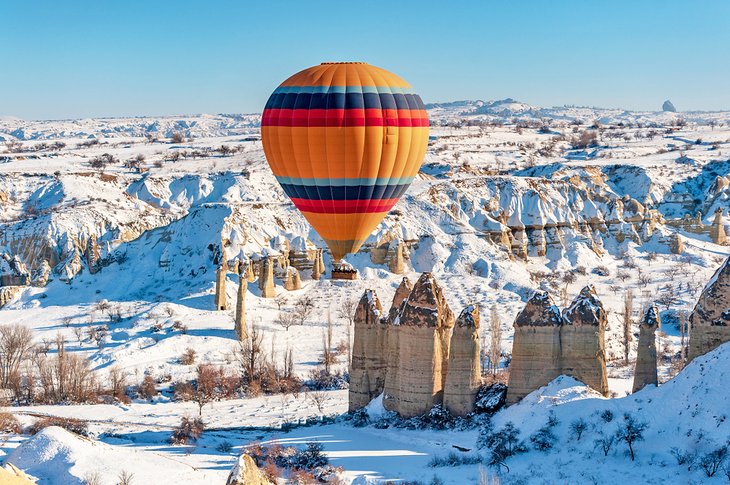
The vast amount of travelers may arrive in Cappadocia between April and October but in winter, when the fairy chimney formations are topped with a dusting of snow, the landscape here is at its most magical.
The best way to experience the sinewy valleys, filled with hoodoo rocks and spiky cones, in all their snowy glory is from the air.
Cappadocia’s hot-air ballooning is one of Turkey’s most famous activities and top of most tourists’ things to do list. Ballooning runs year-round here (though it sometimes has to be called off due to inclement weather) and provides bird’s-eye panoramic views across the landscape.
You’ll need to wrap up warm and be prepared for sub-zero temperatures when being picked up for your ballooning tour, as balloon flights take off just after dawn.
For your best chance of snowy landscapes, come in January or February. Although snow is possible any time from November through to April, these two months generally bring the most snow.
2. Lake Çıldır Sleighing
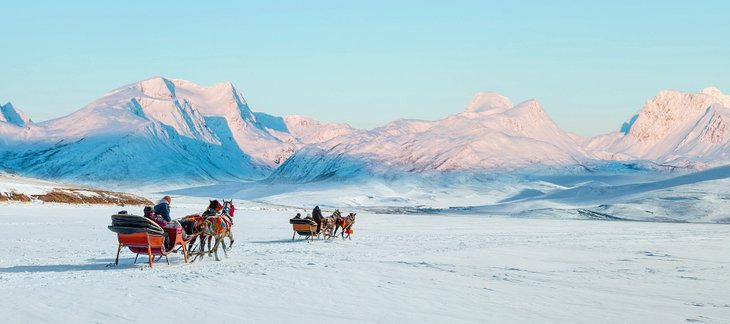
A favorite winter destination for Turkish tourists, who flock here during February, Lake Çıldır is still well off most foreign visitor’s radars. This high-altitude lake, in Turkey’s mountainous northeastern corner, is a winter wonderland and well worth the long journey out here.
The lake is Turkey’s second biggest, measuring 123 square kilometers.
During the winter months, Lake Çıldır freezes solid and is surrounded by a landscape of snowy mountains. Locals run horse-sleigh trips and ice-fishing trips out onto the lake throughout the depths of winter. It’s a highly popular way to experience this fantastical snow-blanketed landscape, which seems to have dropped straight out of a storybook.
Sleighing tours often include a visit to one of the ice-fishing sites on the lake, where local villagers demonstrate their traditional winter fishing skills.
As well as the traditional sleighing activities, snow mobile rental and other more modern transport methods are available on the lake.
On winter weekends, the lake gets very busy with visitors, so try to come midweek.
3. Eastern Express Train Trip
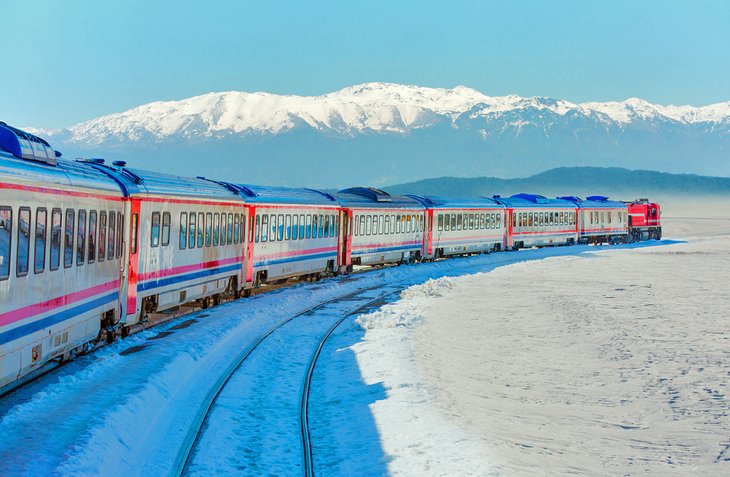
Turkey’s most famous train route is the Eastern Express (Doğu Ekspresi) between Ankara and Kars, and winter is the most popular season to jump aboard.
This 24-hour train ride is all about the scenery, and during the depths of winter, the landscape of high plateaus and craggy mountains that frame Turkey’s northeast region are completely blanketed in snow.
Although this train journey remains little used by foreign visitors, it’s massively popular with Turkish tourists, so advance booking is highly recommended. The train has been known to get fully booked, months in advance.
The train ride ends in Kars, one of Turkey’s best places to visit for winter activities and things to do, as it’s the nearest center to base yourself for trips to the UNESCO World Heritage Site of Ani, as well as Lake Çıldır.
4. Skiing at Uludağ
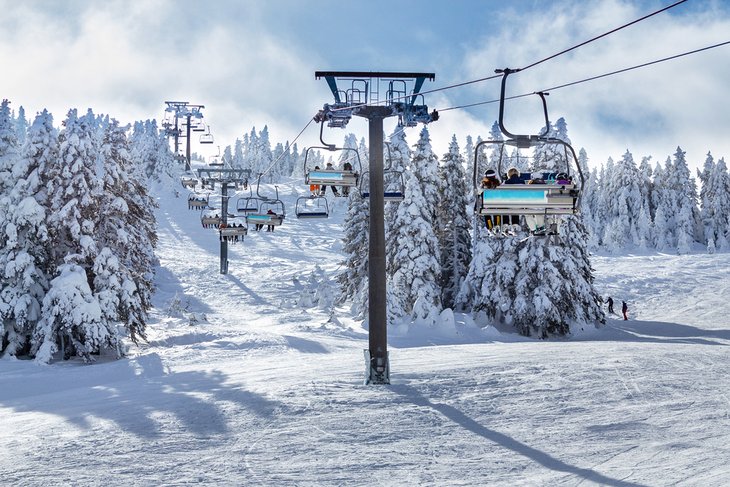
Uludağ (Mount Ulu) is Turkey’s busiest ski center, thanks to it being within easy reach of Istanbul.
Reached by either road from the city of Bursa, 36 kilometers to the north, or by the Bursa Teleferik, which is the longest cable-car ride in the world, the ski resort area on the slopes here offers full facilities for a day of skiing or snowboarding and full rental facilities for ski equipment.
From the resort area, there are 28 kilometers of pistes ranging from beginner to experienced skier levels, with 16 lifts available for transport to the various slopes.
For those who want a ski break, rather than just a day trip, there are 27 hotels in the resort area.
The ski season here runs from late-December to early-March but is generally at its best during January and February.
5. Explore Kars and Ancient Ani
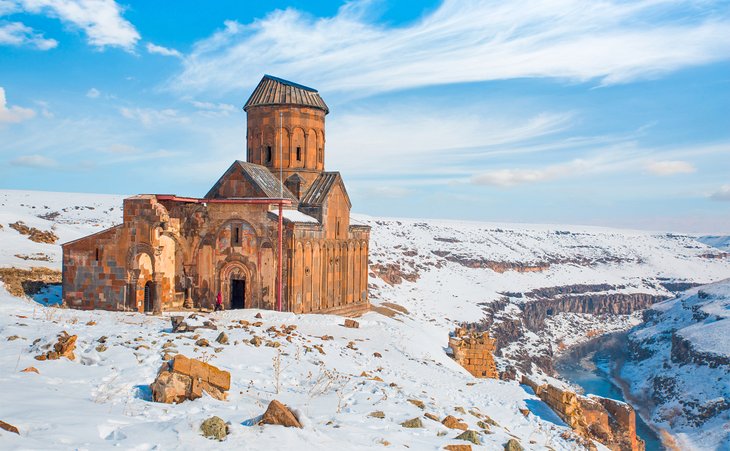
Kars is one of Turkey’s prime bases for winter escapades.
This small city, in Turkey’s far northeast, has become a winter getaway destination in recent years. Its burgeoning popularity is due to it being the closest city to stay to launch yourself out on trips to Lake Çıldır and the many other tourist attractions of the northeast.
The number one attraction near here is the UNESCO World Heritage Site of Ani, which is a fascinating ruin to explore at any time of the year but looks particularly beautiful when its monuments are dusted with snow.
Sitting on the high plateau, smack against Turkey’s border with Armenia, Ani was an important trade route town that became the capital of the Armenian kingdom in the 10th century. Control over this trading center was fought over for two centuries, passing first to the Byzantines in 1045, then to Seljuk, Georgian, and Kurdish forces before the Mongols arrived in 1236.
The city’s decline began with a mammoth earthquake in 1319 and was sealed by the shift in trade routes later that century, after which the site was abandoned completely.
Today, Ani’s elegant church ruins and other monuments sit scattered across the plateau. Many of the buildings still standing date from its grandest era, when it reigned as the Armenian Kingdom’s capital, but there are also ruins from its Seljuk era.
Kars itself has a castle and a couple of historic mosques, as well as some fine 19th-century architecture left over from the period the town was under Russian control. It’s known as a foodie city, with the winter months a good time to tuck into its local roast goose dish specialty.
6. City Break in Istanbul without the Crowds
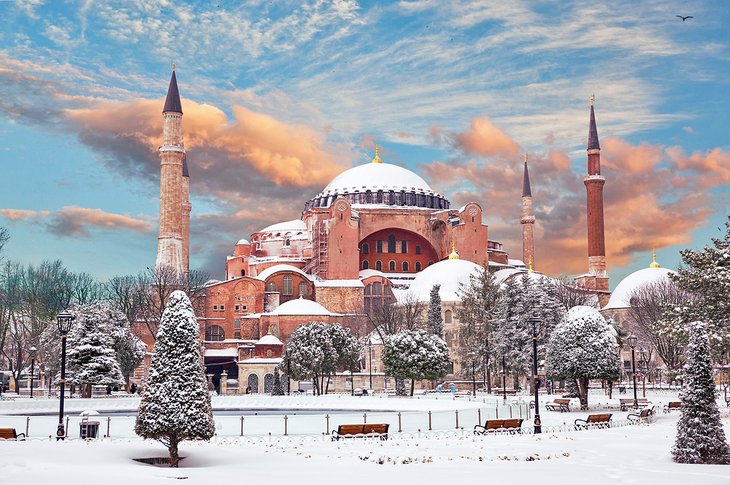
Istanbul is a year-round city-break destination but there are a few really good reasons to head here during winter.
Hotel prices drop substantially from November through to March, meaning you can snag a great accommodation deal at this time of year.
This is also the season that sees far fewer tourists in town, so you get to visit Istanbul’s major monuments, such as Topkapı Palace and the Hagia Sophia, without the massive crowds and the queues that are par for the course during summer.
The major mosques of Istanbul’s historic old town area – in Sultanahmet and around the Grand Bazaar – look incredibly pretty with their grand domes dusted with a sprinkling of snow, making this a good season for photographers.
An extra bonus for foodie travelers in the city during winter is the street food scene. This is the season when the street-cart vendors around town start selling sahlap (a hot milky drink made from orchid tubers) and roast chestnuts – perfect fodder for snacking on a wintry afternoon while touring Istanbul’s tourist attractions.
7. Palandöken Skiing
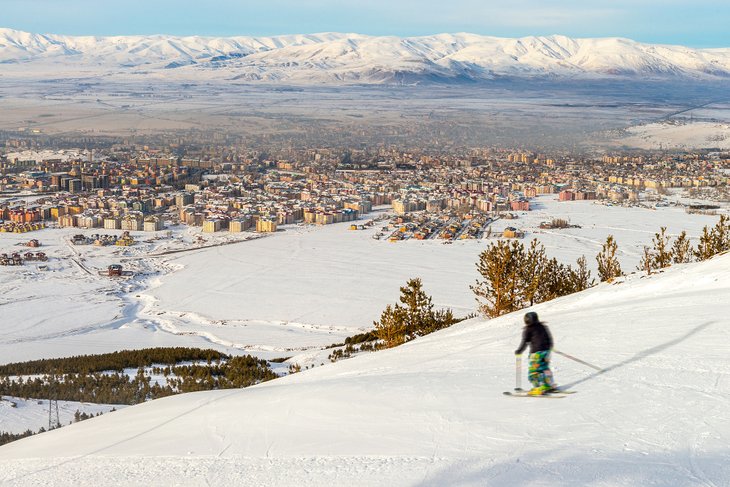
Palandöken Ski Center (also known as Ejder 3200) sits on the slopes of Mount Palandöken, seven kilometers from the city of Erzurum in Turkey’s northeast.
This ski resort is generally thought to be Turkey’s best with excellent facilities combined with 43 kilometers of slopes (making up 22 pistes). There are 13 ski lifts, including a main cable car, connecting the ski runs.
With the resort area sitting at 2,200 meters, this is Turkey’s highest altitude ski center and so attracts plenty of adventurous, experienced skiers, who want to ski off-piste down the treeless high-altitude slopes.
There are trails here, though, that are also good for beginner and intermediate skiers and snowboarders, and facilities for families such as a toboggan park.
If skiing isn’t enough, Palandöken is also where you come for winter tandem paragliding.
Due to the resort’s high altitude, the ski season here tends to be longer than at other Turkish ski centers, with skiing possible usually for around 150 days annually from December through to April.
Regular public transport from Erzurum to the resort area means that ski day trips are easy. The ski center itself has plenty of hotel accommodation as well as cafés, restaurants, and spa facilities.
Come on a weekday if you can because on the weekends, the main ski runs can get packed.
8. Discover Lake Abant
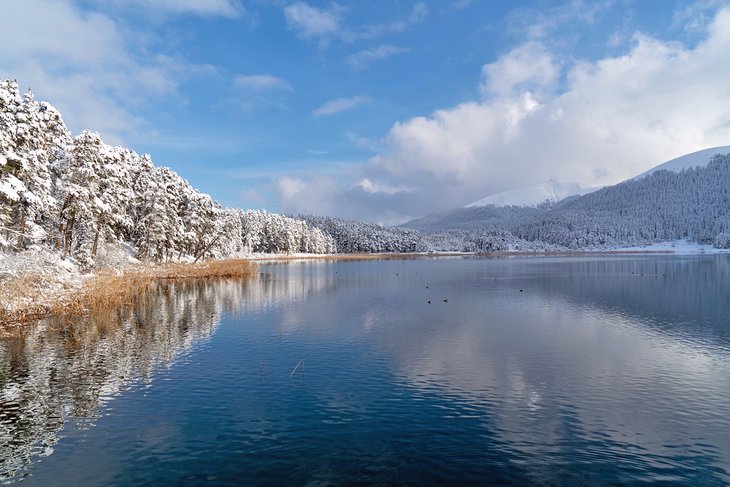
Surrounded by thick pine tree forest, Lake Abant is a freshwater lake in northwest Turkey, 39 kilometers south of the city of Bolu. The lake sits at the center of a national park at around 1,200 meters high and covers an area of just over 1.2 square kilometers.
With walking trails looping around the lake and both bike and horse riding available on the trails, it’s a year-round destination for visitors wanting a nature escape.
In winter, though, photographers flock here to capture snaps of the winter wonderland vistas on strolls around the lake. During the depths of this season, the entire lake surface freezes, and the pine trees are frozen white, turning the lake area into a sublime snowy panorama.
Sitting roughly halfway between Istanbul and Ankara, this one of Turkey’s most accessible destinations to seek out Turkey’s wintry vistas.
9. Ruin Hop the Coast While it’s Quiet
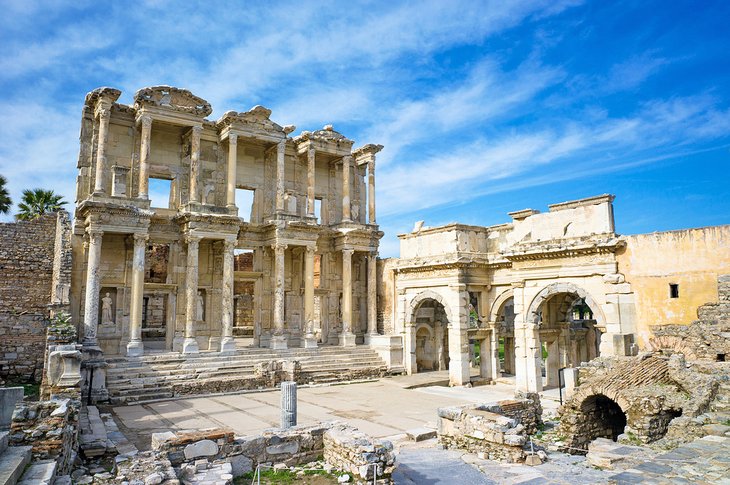
The vast majority of Turkey’s tourists arrive on the coast during July and August, but if you want to escape the crowds at Turkey’s most famous archaeological sites, head here in winter instead.
Sure, you’ll have to pack warm clothes but there are plenty of blue sky days even within the depths of winter on Turkey’s Mediterranean and Aegean coastlines. Although snow will not be a problem along the coast, which only has a mild winter, you do have to be prepared for rain, so don’t forget your umbrella.
While many smaller resort towns, along the coast, where tourism is focused on sun-and-sand vacations, almost completely shut up shop during the winter months, larger towns and cities such as Fethiye and Antalya, and towns where the tourism focus is on archaeological attractions, such as Selçuk, offer plentiful accommodation year-round. Room rates at most hotels are massively discounted from November to March, adding an extra budgeting bonus into a winter stay.
This is the season to come if you want to see Ephesus, Aspendos, and Pamukkale without the tour bus crowds. At some of the Mediterranean’s most famous ancient Lycian sites, such as Xanthos and Tlos, you might even be lucky enough to be the only visitor on-site.
10. Skiing at Sarıkamıs
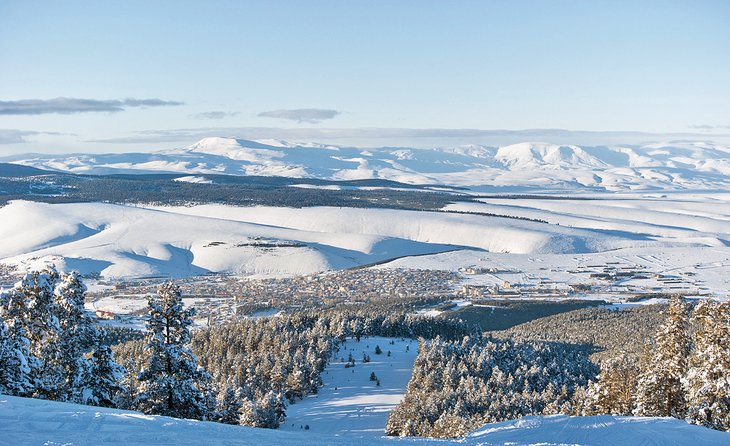
It may not be as popular as Turkey’s other ski centers, but Sarıkamıs is something of an in-the-know secret among winter sports lovers.
Sitting 55 kilometers southwest of Kars, Sarıkamıs is particularly revered among its fans for its excellent powder snow, which skiers here claim are the best snow conditions in Turkey.
The long season skiing opportunities, usually from early December through to April, also make it a favorite destination with winter visitors.
There are four long pistes, surrounded by thick pine forest, and three connecting lifts.
Skiing and snowboarding here is good for beginners through to advanced skiers, and the resort area has five hotels and full equipment rental facilities.
